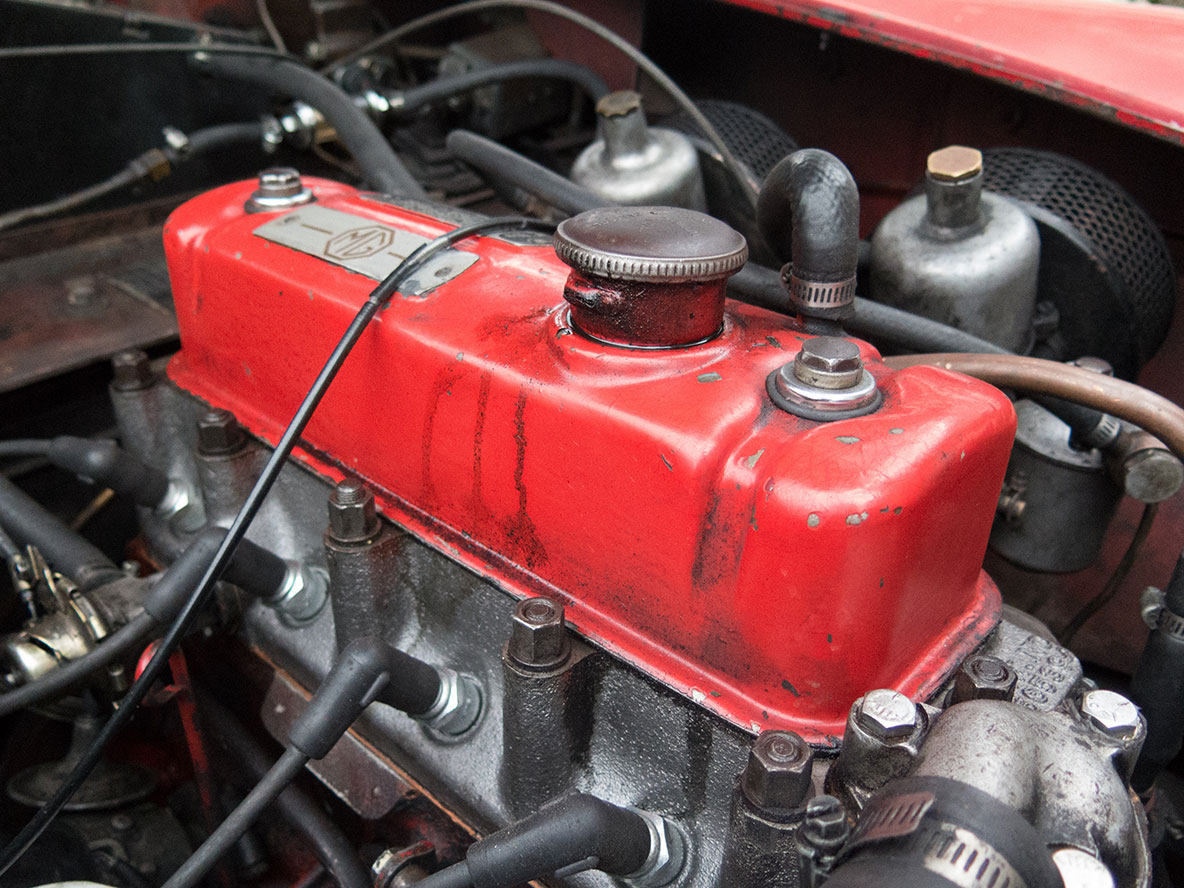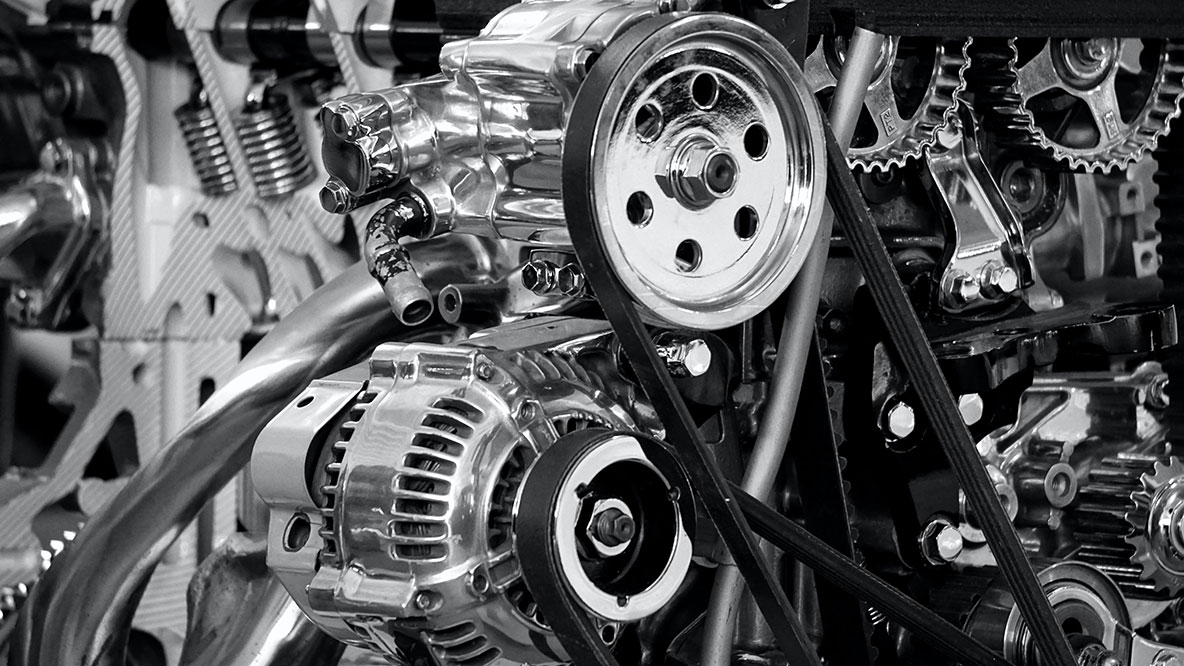How Does a Car Engine Work?

Every driver understands how to operate a vehicle, but knowing the ins and outs of what makes them move is another story. Gearheads aren’t satisfied pushing their foot down to go faster or stop. Instead, they love delving deeper into what’s under the hood and how it all works.
Understanding how the pieces come together to make over two thousand pounds of metal travel at incredible speeds only deepens their bond with their cars and heightens their appreciation. Driving is a wonderful, exciting hobby, and people rely on their vehicles to get around town or travel outside it.
Please keep reading to go beyond knowing how to drive to learn about how the parts under the hood work in a combustion engine.
Cylinders and Pistons
An internal combustion engine is a heat engine that converts the energy produced by burning gasoline into torque or mechanical work. Once that energy is produced, it’s applied to the wheels, so the vehicle moves.
Most modern vehicles have an engine that works on this principle, whether you’re driving the world’s most popular car or an exotic luxury vehicle. Engines have pieces in them called pistons which move up and down inside metal tubes called cylinders.
To get a plain-English idea about how this works, imagine a cyclist’s legs moving up and down to push the pedals. You wouldn’t want your legs to power your vehicle because they can’t possibly move fast enough.
Instead, the engine’s pistons are connected to rods (in the bike analogy, they’re the shins), which are, in turn, connected to a crankshaft. When the rods move up and down, they spin the engine’s crankshaft, akin to how legs spin a bike. Vehicles can have between two and 12 cylinders.
If you are looking for car repair in Toronto to fix your cylinders or any other aspect of the engine, contact AutoOne Service today.
Where Does the Power Come From?
You understand that a cyclist uses their muscle to pedal a bike. What makes a car move? When the combination of fuel and oxygen ignites, it creates a tiny, controlled explosion. These explosions — known as combustion, stroke, or power — heat and expand gases, which in turn push the piston in the cylinder.
The pistons have four essential movements: the combustion stroke, which pushes the piston down. There’s also the intake, compression, and exhaust. During the intake stroke, the valves open to allow for airflow through the engine’s intake system. You understand how this phase works if you’ve ever tried to make a fire while camping or in a fireplace and have seen how blowing air into it helps the fire grow and spread.

Next, when the piston reaches the stroke’s low point, the intake valves close, so no air gets in or out of the cylinder for the compression stroke, the opposite of the intake stroke. As the piston moves up, it compresses the intake charge.
Today’s engines usually have gasoline injected directly into the cylinders near the top of the compression stroke. Just before the piston reaches its pinnacle, or “top dead centre,” spark plugs ignite the fuel mixture and air.
As a result, there are hot burning gases expand and push the piston downwards (in the opposite direction) during the combustion stroke. To return to the cycling analogy, this stroke is akin to pushing the wheels down to make the bike roll forward.
When the combustion stroke is in its bottom dead centre position, the exhaust valves open to let the combustion gases get pumped out of the engine. Imagine a syringe expelling air inside the chamber, and you have an idea of what this is like. By this point, the cycle is over, and it repeats again until the car is parked.
In multicylinder car engines, the more cylinders there are, the more each offsets how hard the others must work to create a balanced and smooth engine. Cylinders don’t have to work at the same time as each other, and spreading this out improves engine performance.
The number and configuration of the cylinders can also impact their performance. Many engines have the cylinder arranged in a straight line, known as an inline-four. When the inline cylinders are formed in two vee-shaped banks, it’s called a V-6 or V-8.
Different Types of Engines
AutoOne service offers vehicles with different types of engines for various levels of performance. For example, turbocharging and supercharging engines pump additional air into the engine, increasing the available levels of oxygen, which creates more fuel to be burned.
This process creates more power when needed, but you can opt for more efficiency when you don’t. Diesel engines follow this process without spark plugs. There are key differences between different internal-combustion engines, but the fundamentals work along these lines.
Anybody looking to turbocharge their vehicle with engine replacement or customization should come to AutoOne Service! We are a one-stop shop for all your vehicle needs, but we specialize in souping up car engines so they work more powerfully or efficiently.
Drivers need their vehicles for different reasons, so they shouldn’t be tuned the same way. Those looking for a high-performance demon on curving highways shouldn’t have the same engine as someone looking to tow vehicles or carry a lot of cargo.
You either need to buy a suitable type of car or visit AutoOne Service for an engine that delivers what’s needed. For that and any auto electrical repair or anything else, come see us.
Hopefully, after reading this blog, you’ll have a better understanding of how the parts move up and down under the hood when you push your foot down on the gas. Driving is simple when you’re behind the wheel, but that’s because engineers have already done the hard work!
Consider AutoOne Service your one-stop shop for all car maintenance service and customizing. Whether your business relies on a fleet of vehicles like vans or rugged trucks to move materials and people, we are happy to partner with you through everything.
The experts in our garage know everything about engines and beyond, so you don’t have to. For all your vehicle-related needs this Christmas and beyond, visit AutoOne Service.